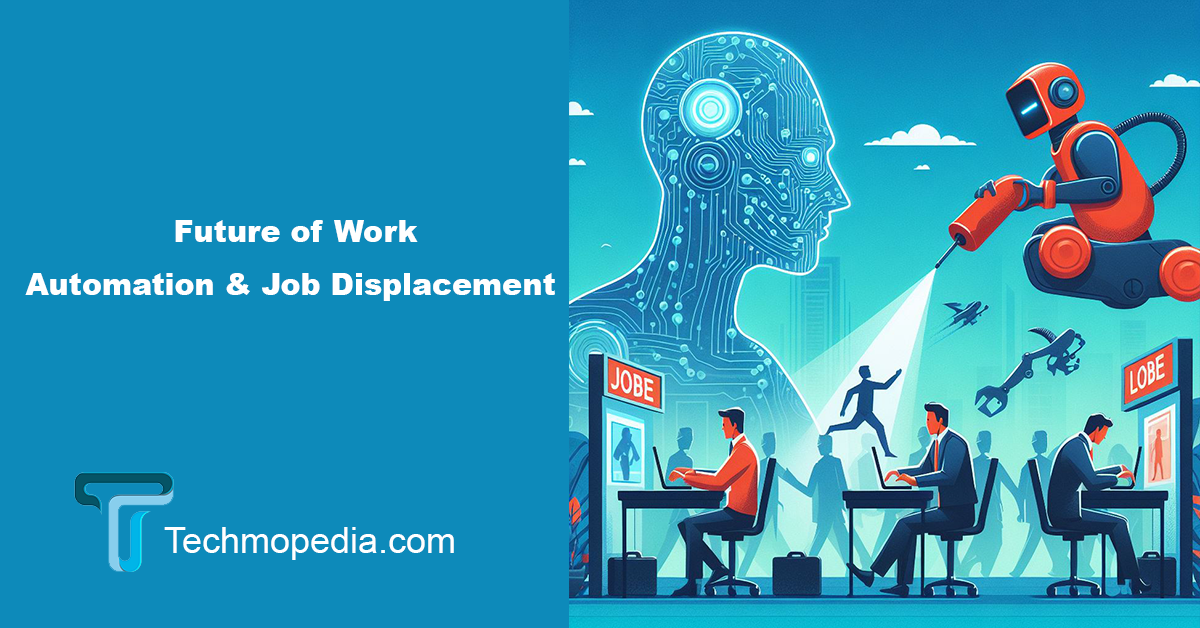Embracing the Evolution: Navigating the Impact of Technology on the Future of Work:
The landscape of work is undergoing a profound transformation, driven by rapid advancements in technology and automation.
As industries embrace artificial intelligence, robotics, and other cutting-edge innovations,
the future of work is increasingly characterized by efficiency gains, enhanced productivity, and unprecedented levels of connectivity.
However, alongside the promises of technological progress come significant concerns about the displacement of jobs, shifts in labor market dynamics, and the widening gap between the skills demanded by employers and those possessed by workers.
In this article, we delve into the impact of technology on the future of work,
focusing specifically on the pros and cons of automation and job displacement.
We will explore the advantages that automation brings, such as increased efficiency, cost reduction, and improved safety,
while also examining the challenges it poses, including job loss, skills gaps, and ethical considerations.
By dissecting these complex issues, we aim to provide insights into how individuals, businesses, and policymakers can navigate the evolving professional landscape and harness the benefits of technology while mitigating its potential drawbacks.
Join us as we unravel the intricacies of the intersection between technology and work, and discover strategies for adapting to the changing nature of employment in the digital age.
Pros of Automation:
- Increased Efficiency: Automation streamlines repetitive tasks, enabling businesses to operate more efficiently and allocate resources effectively.
- Cost Reduction: By replacing human labor with automated systems, companies can potentially reduce labor costs and improve their bottom line.
- Improved Safety: Automation can eliminate the need for humans to perform hazardous tasks,
thus reducing workplace accidents and improving overall safety conditions. - Innovation and Creativity: With mundane tasks automated,
employees can focus on more creative and strategic aspects of their work, driving innovation within organizations. - Enhanced Quality: Automation can lead to greater precision and consistency in tasks, resulting in higher-quality products and services.
Cons of Automation:
- Job Displacement: One of the most significant concerns surrounding automation is the potential for widespread job loss, particularly for roles that involve routine and repetitive tasks.
- Skills Gap: The rapid advancement of technology may outpace the ability of workers to acquire new skills, leading to a mismatch between the skills demanded by employers and those possessed by workers.
- Economic Inequality: Automation could exacerbate income inequality by disproportionately benefiting skilled workers while displacing low-skilled laborers, widening the gap between the rich and the people with low-income.
- Loss of Human Touch: Automation may lead to a decline in personalized customer service and human interaction, which could negatively impact customer satisfaction and loyalty.
- Ethical Concerns: The rise of AI and automation raises ethical questions regarding privacy, data security, and the potential for biased algorithms to perpetuate discrimination.
Adapting to the Future of Work:
- Investing in Education and Training: To bridge the skills gap, governments, businesses, and educational institutions must collaborate to provide workers with the necessary training and education to adapt to changing job requirements.
- Promoting Lifelong Learning: Encouraging a culture of lifelong learning and upskilling is essential to ensure that workers remain relevant in the face of technological advancements.
- Embracing Diversity and Inclusion: As automation reshapes the workforce, fostering diversity and inclusion becomes crucial to ensure that the benefits of technological innovation are equitably distributed.
- Implementing Responsible AI Practices: Organizations must prioritize ethical considerations in the development and deployment of AI and automation technologies, ensuring transparency, fairness, and accountability.
- Creating New Opportunities: While automation may eliminate some jobs, it also creates new opportunities in emerging industries and roles that require human ingenuity, empathy, and creativity.
Reskilling and Upskilling
While job displacement is a concern, history demonstrates that technological advancements often create new job opportunities.
The key lies in reskilling and upskilling the workforce to adapt to the changing demands.
- Educational Initiatives: Governments and educational institutions must prioritize programs focused on STEM (Science, Technology, Engineering, and Mathematics) education,
coupled with training in critical thinking, communication, and social intelligence. - Lifelong Learning: Individuals must embrace lifelong learning to stay relevant.
Online courses, workshops, and bootcamps can equip workers with the necessary skills to thrive in the automated workplace.
Conclusion: The Future of Work is a Collaborative Effort
Automation is inevitable, and its impact on the workforce will be significant.
However, by acknowledging the challenges and proactively preparing through reskilling initiatives,
we can harness the potential of automation to create a future of work characterized by:
- Human-AI Collaboration: Humans and AI working together, leveraging their unique strengths to achieve optimal results.
- Focus on Soft Skills: A growing demand for soft skills like creativity, critical thinking, and the ability to collaborate effectively.
- Evolving Job Landscape: The emergence of new job roles requiring expertise in areas like AI, data science, and automation management.
FAQs: Automation and the Future of Work
1. Will automation eliminate all my jobs?
2. What jobs are most at risk of automation?
3. How can I prepare for the changing job market?
Embrace lifelong learning: Pursue online courses, workshops, or bootcamps to stay updated with the evolving job market.
Network and build connections: Stay informed about emerging industries and potential job opportunities.
4. What role does the government play in this transition?
Invest in STEM education: Prioritize programs that equip individuals with the technical skills needed in the future workforce.
Support retraining programs: Provide financial aid and resources for workers undergoing reskilling initiatives.
Develop policies for a changing workplace: Address potential income inequality and ensure a smooth transition for displaced workers.
5. Is there anything positive about automation in the workplace?
Increased productivity: Businesses can streamline workflows, leading to economic growth and potentially creating new job markets.
Reduced workload: Repetitive tasks are handled by machines, freeing up human capital for higher-level thinking and innovation.
Improved safety: Automation can take over dangerous tasks, reducing workplace accidents and injuries.

